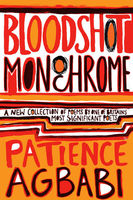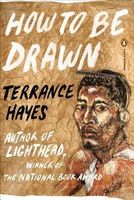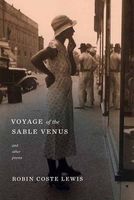Poetic Inspiration II
By Kate Sutherland
This is the second in a series of posts highlighting poems that have made my synapses crackle, broadened my sense of what poems can be and do, and sparked me to stretch further in my own work. The first can be found here: http://open-book.ca/Writer-in-Residence/Kate-Sutherland/Poetic-Inspiration-I. So, continuing where I left off:
4. I have been immersing myself in sonnets for more than a year now, reading lots of classic stuff and also all of the contemporary renditions that I can get my hands on. At this point, I would not have thought it was possible to surprise me with the form. But I was surprised and delighted by Patience Agbabi’s sonnet sequence, “Problem Pages,” which appears in her third collection of poems, Bloodshot Monochrome. Each sonnet in the sequence takes its title from another sonnet by another poet (including, for example, Shakespeare, Lady Mary Wroth, Wordsworth, Edna St. Vincent Millay, and June Jordan). The first eight lines take the form of a letter seeking help from an advice columnist (“Dear Patience”), and the final six are the reply. Each sonnet thereby evokes the poet from whom its title is taken, and the sequence as a whole evokes the history of the sonnet and its entanglement with race and gender. It’s funny and brilliant.
5. Terrance Hayes’ poem “Portrait of Etheridge Knight in the Style of a Crime Report,” literally takes the form of a crime report, grids with headings and subheadings and boxes to be filled in (crime, location of incident, victim’s name, code section, sex, race, hair-length, and so on). Etheridge Knight was a poet who began writing poems while in prison and who wrote about imprisonment as enslavement. So there’s an immediate visual impact to seeing a portrait of him made of text confined in boxes that form bars on the page. But the words Hayes puts in each box bust out by defying any expectation of what should appear there. I first encountered this poem in the magazine jubilat, but it has since appeared in Hayes’ latest book, How To Be Drawn, alongside many other dazzlingly inventive poems. I've made it required reading in the Law and Literature class that I teach.
6. Seventy-five pages of Robin Coste Lewis’ first book, Voyage of the Sable Venus, is taken up by the title poem, and it is, as she explains in a prologue, “comprised solely and entirely of the titles, catalog entries, or exhibit descriptions of Western art objects in which a black female figure is present, dating from 38,000 BCE to the present.” Before reading the poem, I was intrigued by this premise and by the rules Lewis set for herself in writing it (also outlined in the prologue). Then, I was utterly bowled over by the poem itself. Though Lewis was strict about not altering the titles, the poem is not simply a list of titles, rather it’s broken up into a sequence of poems each taking different forms. So there is invention within invention. It all adds up to a work of extraordinary power. I found myself lingering for a long time even over the notes at the end listing the various institutions—galleries, museums, libraries—from which the titles were drawn, as if that list of sources was a continuation of the poem.
Stay tuned for a third post on poetic inspiration later this week.
Your CanLit News
Subscribe to Open Book’s newsletter to get local book events, literary content, writing tips, and more in your inbox
The views expressed in the Writer-in-Residence blogs are those held by the authors and do not necessarily reflect the views of Open Book.
Kate Sutherland was born in Scotland, grew up in Saskatchewan, and now lives in Toronto, where she is a professor at Osgoode Hall Law School. She is the author of two collections of short stories: Summer Reading (winner of a Saskatchewan Book Award for Best First Book) and All In Together Girls. How to Draw a Rhinoceros is Sutherland’s first collection of poems.
You can reach Kate throughout the month of October at writer@open-book.ca.





